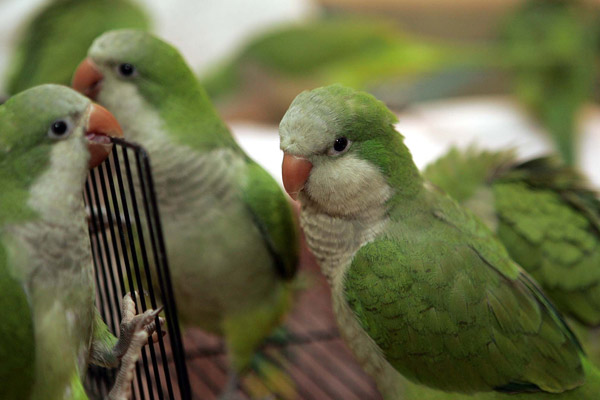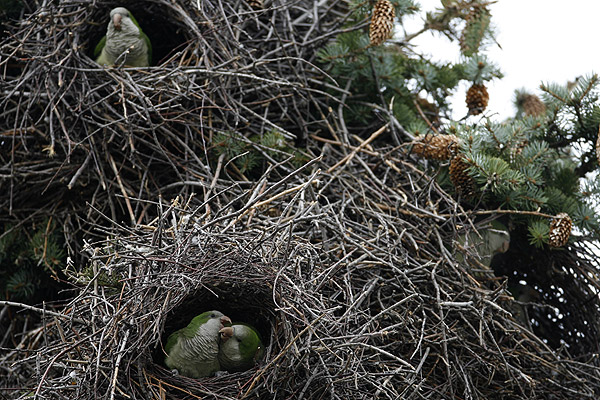
Terry Harris/Chicago Tribune
So many of Aleksandar Hemon's reasons he'll never leave Chicago are familiar to me, as they'll be to even those who are fairly new in town. But one in particular resonated with me, since it was one of the first things I saw in Chicago, and one of the things that helped get me through to spring:
The Hyde Park parakeets, miraculously surviving brutal winters, a colorful example of life that adamantly refuses to perish, of the kind of instinct that has made Chicago harsh and great. I actually have never seen one: the possibility that they are made up makes the whole thing even better.
They are, disappointingly or not, real (and celebrating their 40th anniversary in Chicago) though the sight of the squat little monk parakeets is always a surprise during Hyde Park's monochromatic winters, when they're the only green in sight. They make up a small percentage of the monk parakeets in America—a couple hundred out of some 20,000—but the Hyde Park winter is probably the most difficult environment the birds inhabit.
But it's not an entirely unfriendly environment. The massive green spaces and old trees maintained by the university have given the birds a modest habitat to survive in small numbers:
The species has thrived largely because it is the only parrot that doesn't nest in cavities, enjoys a wide diet, and survives harsh northern winters in those bulky roosts, which are shared by up to 10 pairs of birds. Pruett-Jones and his students have found that one could scarcely design a better place for monk parakeets than Hyde Park. "We're creating and maintaining habitat—large mature trees interspersed with open lawns where they feed—that they have readily adapted to," he says. "They can eat pretty much any vegetative material, and in the winter they can switch to backyard bird feeders."
Those roosts can be massive, growing up to six feet in length, and are architectural wonders. Here's one in Burbank:

Abel Uribe/Chicago Tribune
And what the construction process looks like in a controlled environment (the video depicts ten days worth of work for the parakeet).
But the parakeets might never have survived the U.S. Department of Agriculture were it not for a late, legendary mayor and the Hyde Park community, which stayed the hand of federal intervention:
Hyde Park residents are fiercely protective of their parakeets. That's partly because Harold Washington, Chicago's first African-American mayor, lived across the street from the best-known colony and called the monks a "good luck talisman." After Washington died in 1987, the USDA called for the parakeets' removal. Local residents formed a defense committee and threatened a lawsuit. The birds stayed.
Why would anyone want to deprive the northern climes of such wonderfully exotic birds? One of their adaptations to the cold winters of the north—including New Jersey and New York—is a propensity to build the nests next to heat-giving transformers, a habit that can literally backfire.


